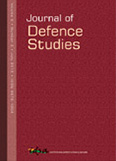From Protection of Shipping to Protection of Citizens and National Economies: Current Changes in Maritime Security
This article analyses the alteration of the referent object for maritime security from protection of shipping and port facilities to protection of citizens and national economies. It presents a tentative answer on the extent and consequences of this alteration applied by states in a global perspective, and focuses on validating four explanatory factors on why the alteration has occurred. The time period of study is between 1991 and 2013.
- Stefan Lundqvist
- July 2013














